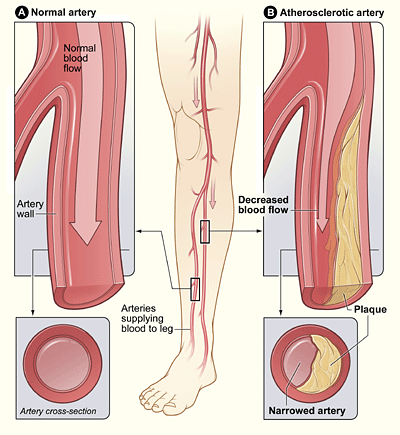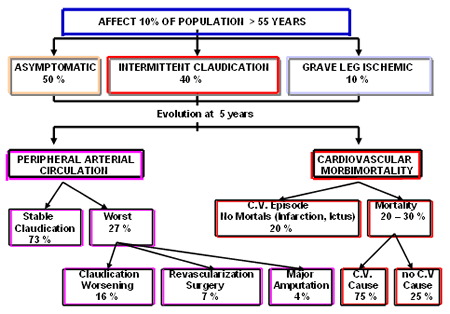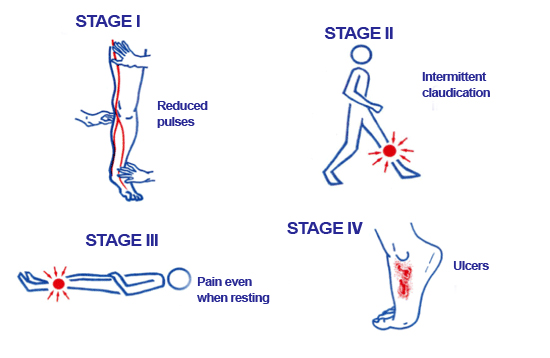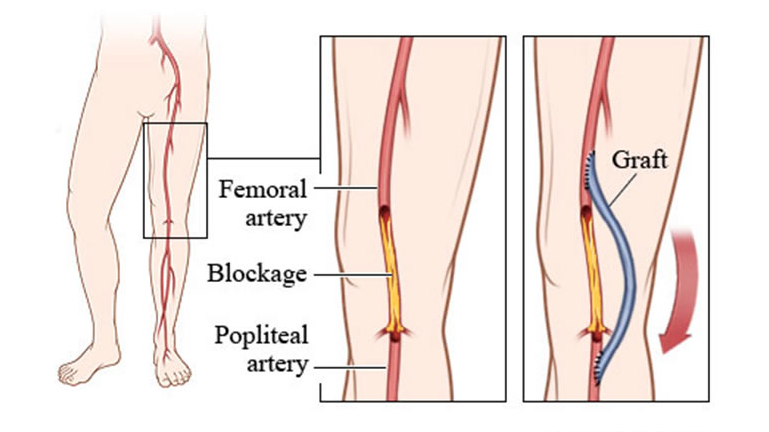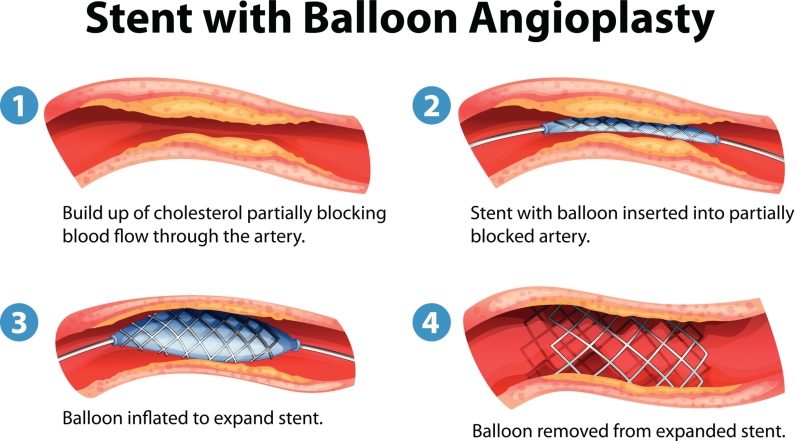- The term peripheral vascular disease can include any disorder that affects any of the blood vessels, but is usually used as a synonym for peripheral artery disease (PAD).
- PAD is the most common disease of the arteries, caused by build-up of atherosclerosis, a gradual process in which the artery gradually becomes blocked.
Of the peripheral arteries, those of the legs are most often affected. Other arteries frequently affected by atherosclerosis include those supplying blood to the intestines, kidneys or arms. - When an artery is blocked or narrowed, the part of the body supplied by that artery does not get enough blood/oxygen, called ischemia.
This can cause various symptoms depending on which organ system is affected. - Peripheral vascular disease is more common in smokers, and the combination of diabetes and smoking almost always results in more severe disease.
Symptoms
Patients may feel pain in their calves, thighs, or buttocks, depending on where the blockage is. Usually, the amount of pain is a sign of how severe the blockage is. In serious cases the leg pulses may be weak, feet may be cold, and toes turn blue. In severe cases, the tissue dies (called gangrene) and amputation may be needed.
Sometimes leg cramps develop when a person walks, and the leg pain usually gets worse with increased activity. This cramping is called intermittent claudication. Like the chest pain of angina, the leg pain of intermittent claudication usually goes away with rest.
Diagnosis
Tests may include
- Ultrasound, which is a test that uses sound waves to produce an image of blood flow through your arteries.
- Arteriography, which is a test that may be performed if your doctor thinks your condition is serious enough for a percutaneous intervention or surgery. The test uses a harmless dye that is injected into the arteries. It lets doctors see where and how serious the blockage is.
Treatment
When the blockages are not severe, it can be controlled by losing weight, quitting smoking, and following a regular exercise program. Fora severely blocked artery, and when limb survival is threatened, interventions may be needed:
- Peripheral vascular bypass. This procedure creates a way for blood to flow around one or more of the narrowed vessels.
- Percutaneous intervention (balloon angioplasty or a peripheral stent)

